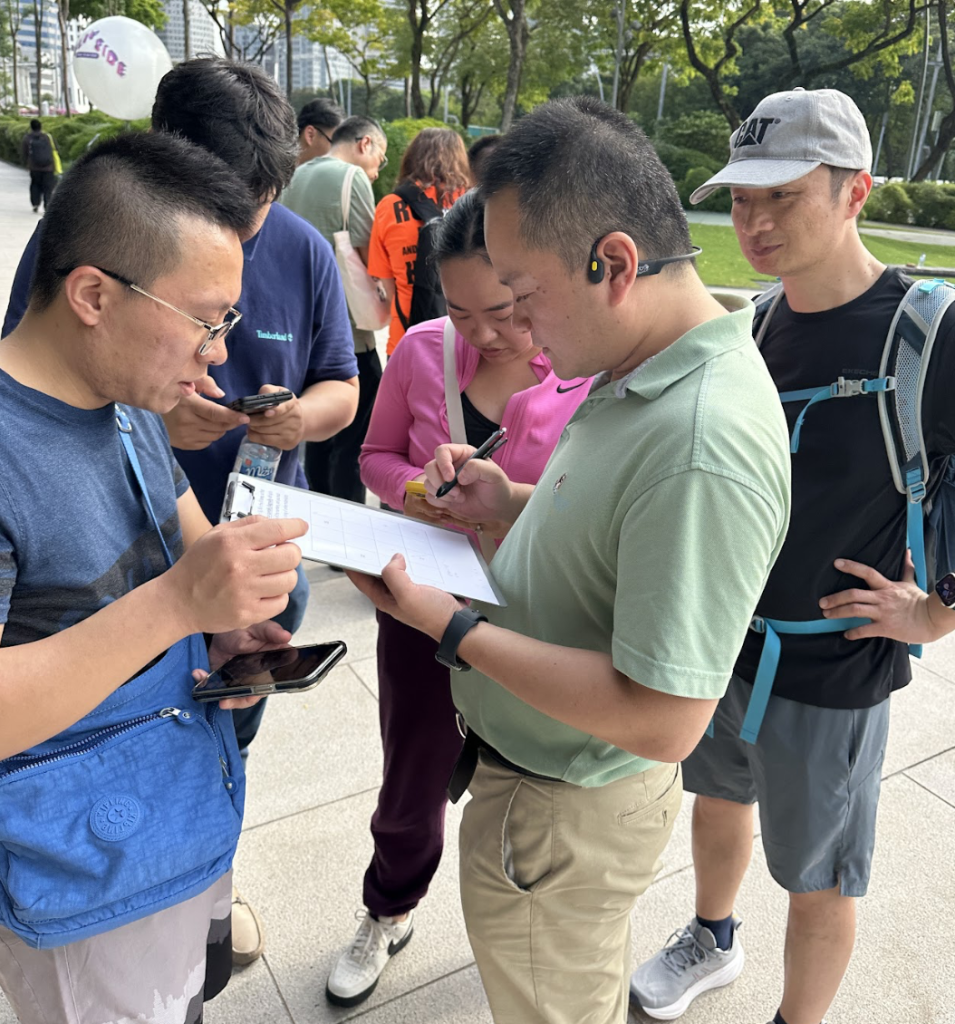
Effective feedback accelerates team learning by translating observations into actionable steps that align individual strengths with collective goals. Companies that adopt regular feedback cycles see turnover reduced by up to 14.9% and experience higher engagement across corporate teams. This guide outlines why feedback drives team growth, the types of feedback used in high-performing groups, strategies for cultivating a feedback-rich culture, practical feedback loops, and how team building events in Singapore can reinforce these skills.
Why Is Effective Feedback Crucial for Team Growth?
Effective feedback delivers clear, behavior-focused insights that guide team members toward improved performance and deeper collaboration. By spotlighting strengths and addressing gaps, feedback creates a continuous improvement cycle that underpins cohesive teamwork. For teams striving to unlock sustained growth, structured feedback becomes the foundation for trust, engagement, and shared accountability.
What Are the Key Benefits of Feedback in Team Building?
Feedback in team building strengthens communication channels, builds mutual trust, and drives sustained engagement through targeted recognition and development.
- Accelerated learning: Specific input helps individuals correct course quickly.
- Enhanced trust: Open dialogue signals respect and transparency.
- Higher engagement: Employees feel valued when progress is acknowledged.
- Better problem-solving: Real-time insights surface innovative ideas.
These advantages cement a culture of collaboration and prepare teams for complex challenges ahead.
Benefits of Feedback in Team Dynamics
Feedback helps team members improve their performance by identifying areas for improvement and taking steps to address them, leading to increased efficiency and productivity [1]. It also helps team members understand how they contribute to the team’s goals and objectives, increasing motivation and engagement [1].
JiGSO, Four reasons why feedback is essential in team dynamics
This research supports the article’s claim that effective feedback is crucial for team growth by highlighting the positive impact of feedback on individual and team performance.
How Does Feedback Reduce Employee Turnover and Boost Engagement?
Regular feedback reduces turnover by 14.9% by fostering clarity around expectations and growth opportunities, while weekly check-ins increase engagement through timely recognition. When employees understand their impact and see a path for advancement, they remain committed to team objectives. Clear feedback loops transform performance discussions into motivational tools, strengthening retention and productivity.
What Are the Different Types of Feedback Used in Teams?
Teams rely on multiple feedback formats to address diverse development needs and leadership dynamics. Each type serves a unique role in aligning individual contributions with organizational goals.
Below is a comparison of common feedback types and their core outcomes:
| Feedback Type | Focus | Outcome |
|---|---|---|
| Constructive feedback | Behavior improvement | Clarifies expectations and promotes continuous growth |
| Peer feedback | Collaborative insight | Encourages mutual learning and support |
| 360-degree feedback | Holistic performance review | Aligns perspectives across roles for balanced development |
| Upward feedback | Leadership effectiveness | Surfaces managerial blind spots for better decision-making |
| Downward feedback | Direct performance guidance | Provides clear direction to support employee development |
These formats equip teams with the right mechanisms to reinforce strengths and address weaknesses from every angle.
How Does Constructive Feedback Improve Team Performance?
Constructive feedback improves team performance by focusing on specific behaviors, explaining their impact, and recommending actionable changes. For example, a facilitator might highlight how concise communication during meetings reduces misunderstandings. By pairing observations with improvement strategies, teams cultivate efficiency and accountability that drive measurable results.
What Are Peer, 360-Degree, Upward, and Downward Feedback?
Peer feedback gathers insights from colleagues on collaboration and support, enabling team members to coach each other.
360-degree feedback integrates input from managers, peers, and direct reports to provide a comprehensive performance snapshot.
Upward feedback empowers employees to evaluate leadership styles, promoting managerial growth.
Downward feedback allows leaders to set expectations and recognize achievements directly, guiding career development.
How Can You Build a Feedback-Rich Culture in Your Team?

Building a feedback-rich culture requires intentional practices that normalize open dialogue and continuous learning. Embedding feedback into daily routines and leadership behaviors ensures that improvement becomes a shared responsibility and a natural part of teamwork.
Building a Feedback-Rich Culture
A feedback-rich culture promotes consistent and helpful feedback to employees from supervisors, and encourages workers to provide meaningful feedback to their leaders and colleagues [2]. This ensures that feedback, recognition, and praise are integral to the communication process [2].
Engage for Success, 6 Ways To Build A Feedback-Rich Culture
This citation supports the article’s discussion on building a feedback-rich culture by emphasizing the importance of consistent and two-way feedback within a team.
What Is Psychological Safety and Why Does It Matter for Feedback?
Psychological safety is the shared belief that the team environment supports risk-taking and honest communication, which is essential for candid feedback exchanges. When members trust that mistakes will be met with support rather than punishment, they speak up freely, accelerating innovation and resilience in complex projects.
How Can Leaders Foster a Culture That Embraces Feedback?
Leaders foster feedback culture by modeling vulnerability, scheduling regular one-on-one check-ins, and publicly recognizing improvement efforts. They establish clear guidelines for giving and receiving input, encouraging active listening and constructive dialogue that reinforce a growth mindset across the team.
How Do You Overcome Resistance to Feedback in Teams?
Overcoming feedback resistance involves framing input as a growth opportunity, using structured models like Situation-Behavior-Impact to depersonalize discussions, and addressing emotional barriers through empathy. This approach reduces defensiveness and paves the way for honest conversations that strengthen team cohesion.
How Do You Implement Effective Feedback Loops in Team Building?
Effective feedback loops integrate continuous observation, scheduled reflection points, and action planning to ensure insights translate into performance improvements. Establishing clear stages where feedback is collected, discussed, and applied keeps teams aligned and accountable.
What Are the Best Practices for Designing Feedback Processes?
- Defining clear feedback guidelines and expectations.
- Using standardized tools or platforms for consistency.
- Scheduling regular one-on-one or group sessions.
- Ensuring confidentiality to build trust.
These steps create reliable frameworks that support ongoing development and reinforce constructive behaviors.
When Should Feedback Be Given: Real-Time vs. Scheduled?
Timely feedback balances immediate corrections with reflective insights.
Below is a comparison:
| Timing | Use Case | Benefit |
|---|---|---|
| Real-time | During tasks or meetings | Prevents errors and reinforces positive actions |
| Scheduled | Weekly or monthly review sessions | Enables deeper reflection and strategic planning |
How Do Team Building Events Enhance Feedback Skills and Team Growth?

Team building events create safe, structured environments where participants practice giving and receiving feedback, strengthening communication skills and trust. By simulating real-world scenarios, these programs translate theoretical feedback models into hands-on experiences that drive lasting behavioral change.
Team Building Activities and Feedback
Team building activities encourage connection and collaboration among employees, but they can be counterproductive if they exclude team members [11]. Team building activities can foster trust, rapport, and communication among employees [11].
Indeed, 22 Team Building Activities for the Workplace (And How to Plan Them) (2025-07-30)
This citation supports the article’s discussion on team building events by highlighting the importance of inclusion and communication in team-building activities.
Which Team Building Activities Promote Feedback and Communication?
Structured debrief sessions after problem-solving challenges, role-play exercises that focus on active listening, and collaborative games where participants rotate leadership roles all encourage real-time feedback. These activities reinforce feedback principles in engaging, memorable formats that teams can replicate in the workplace.
How Have Our Team Building Programs Improved Feedback Dynamics?
Our Singapore-based programs have led to 20% faster conflict resolution and a 30% increase in feedback frequency as clients report stronger cohesion and clearer communication channels. Organizations looking to replicate these outcomes can explore quality team building programs – customized sessions that integrate feedback workshops – to strengthen team synergy at every level (https://adventour.com.sg/quality-team-building-programs/).
Feedback mastery transforms team dynamics, driving performance, retention, and engagement. Companies ready to unlock their teams’ full potential can partner with expert facilitators to design events that embed effective feedback strategies into their culture.
